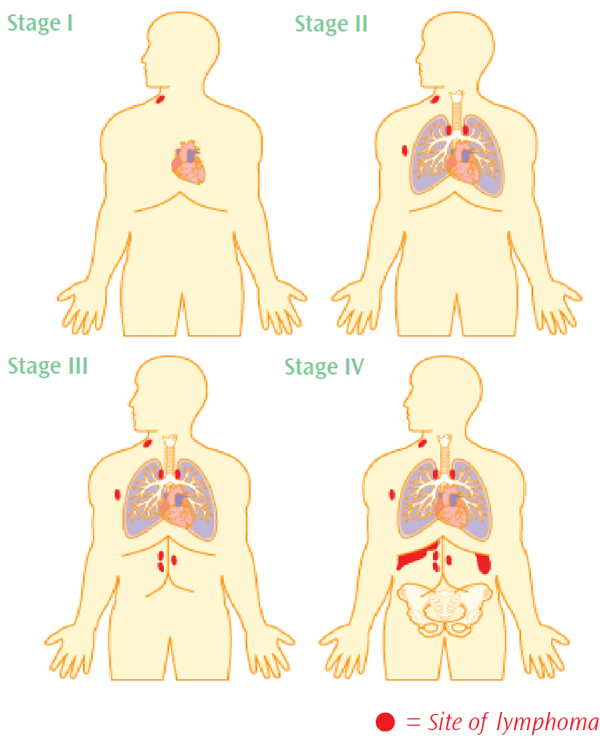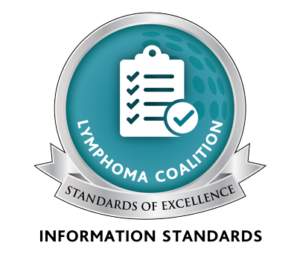Staging Lymphoma
The stage of a cancer provides information on whether the cancer has spread and the extent to which it has spread within the body. There are four stages of lymphoma, with stages I and II being limited (involving a limited area) and stages III and IV being advanced (more widespread). The stage is determined by:
- The number and location of lymph nodes affected;
- Whether the affected lymph nodes are above, below or on both sides of the diaphragm (the large, dome-shaped muscle under the ribcage that separates the chest [and/or neck] from the abdomen);
- Whether the disease has spread to the bone marrow or to other organs such as the liver.
The most common method for staging lymphoma is called the Ann Arbor Staging System, which can be summarized as follows:
| Stage | What It Means |
| I | The lymphoma is in only one group of lymph nodes. |
| II | Two or more groups of lymph nodes are affected but they are all either above or below the diaphragm, either all in the chest or all in the abdomen. |
| III | Two or more groups of lymph nodes are affected in both the chest and the abdomen. |
| IV | Lymphoma is in at least one organ (e.g., bone marrow, liver or lungs) as well as the lymph nodes. |

Your doctor may also add a single letter to the stage.
A generally means the patient has not experienced any troublesome symptoms.
B means the patient has experienced B symptoms (fever, night sweats, weight loss)
X means patients have bulky disease (meaning large tumours greater than 10 cm in size)
E means patients have extranodal disease (disease outside of the lymph nodes)
Patients with a B designation have one or more of the following B symptoms:
- Unexplained weight loss of more than 10% in the six months before diagnosis
- Unexplained fever with temperatures above 38°C (100.4°F)
- Drenching night sweats.
The presence of B symptoms may be associated with more advanced-stage disease.





